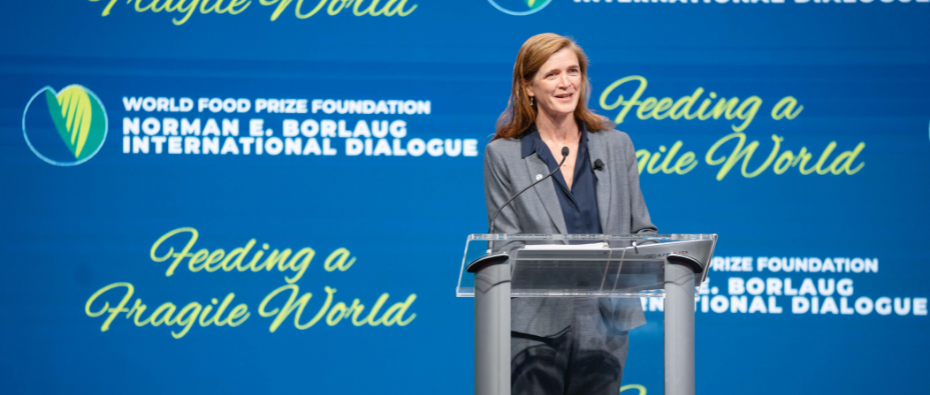After a day orienting food security experts from around the world on the interconnected challenges of climate change, COVID-19, global conflict and more, the second day of the Borlaug Dialogue began to delve deeper into the agricultural development landscape with a keynote speech from Samantha Power, administrator of the U.S. Agency for International Development (USAID).
Power opened the morning by giving an overview of the current state of global food security through the eyes of USAID’s aid workers and projects around the world, emphasizing the long-term threat of climate change to food security. “There are many culprits behind today’s food crisis—including Putin’s war on Ukraine and roaring conflicts around the world—but more than any other force, climate change threatens humankind’s ability to feed itself,” she said.
Knowing the contemporary crises the global community faces, Power looked to Norman Borlaug’s work for a pathway forward, describing how the innovations of the green revolution proved that improved agricultural productivity can adequately feed a hungry world. Still, the green revolution had unintended consequences for the most vulnerable – particularly in Africa – and a renewed approach that removes barriers to access, invests in local communities, and iterates in unique sociocultural contexts is more than necessary in our food system.
To achieve this goal, she called for increased action to accelerate innovations and technologies focusing on three key areas: what we grow, how we grow, and who benefits.
Power continued about the value of agricultural innovations, like the bioengineering and fortification born out of the green revolution, not as silver bullets but as additional support to broader, systemic transformations.
“While it can’t replace a diverse, nutritious diet, food fortification can provide families a nutrition safety net,” said Power.
In a special moment, Power described the example of high-yielding, drought- and Striga-resistant sorghum, which advanced food security for hundreds of millions of people in Sub-Saharan Africa. 2009 World Food Prize Laureate Gebisa Ejeta, who was the first to develop such a variety of sorghum, was in attendance and applauded by Power and the audience.
In response to the need for innovation in the field, like that of the World Food Prize Laureates, Power announced a new initiative, the Global Food Security Research Strategy. Led by USAID and USDA, the research strategy aims to build a roadmap for research and investment that will generate sustainable solutions for addressing the root causes of hunger and malnutrition.
The research strategy prioritizes the following areas: genetic improvements of crops and livestock, climate-smart agriculture, and improved nutrition.
This blog was originally published on the World Food Prize Foundation’s Borlaug Blog.
Photo by © World Food Prize/Zach Boyden-Holmes 2022



